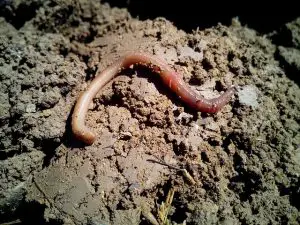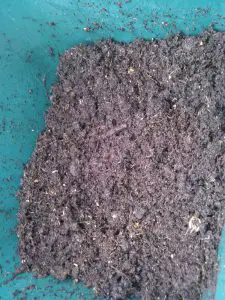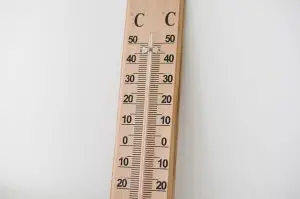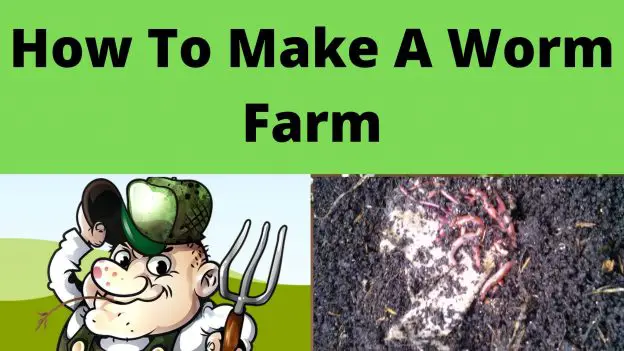I’ve been looking into how to make a worm farm for some time now, and I thought I’d share my research and set up with you. First let’s look into why make a worm farm, as this is a question I’m sure many will be asking.
Table of Contents
Why Make A Worm Farm?

What are the benefits of making a worm farm and what are the benefits of keeping worms? Valid questions, which I’ll attempt to answer as fully as I can. First let’s look at worms and what they do.
How Do Worms Benefit The Garden?

In an effort to keep this short, in a nutshell, worms benefit the garden by:-
- Converting organic plant matter into nutrients that plants can absorb.
- Producing worm castings, which are basically worm poo. But it’s full of nutrients like nitrogen, magnesium, potassium and phosphorous. All vital for healthy plant growth.
- Worms propel themselves through the soil by secreting a slime, this slime is packed full of nitrogen.
- As the burrow through the soil, worms create pathways for water, oxygen, and plant roots to easily navigate.
- This also allows for better drainage ensuring plants don’t get waterlogged and suffocate.
- Worms burrow deep into the subsoil, releasing deeply buried nutrients into the soil.
So Why Make A Worm Farm?
Well assuming you already have a compost heap, and a healthy soil structure that already has worm population, why bother?- It’s an extra source of nutrient rich soil enhancer. plus it’s another way of converting kitchen waste into compost.
How To Make A Worm Farm

The first requirement is a container of some kind, it needs to be between 8-12 inches deep. There are premade worm bins that can be purchased and these range in price from around £60.00-£150.00 depending on size and make. But any container can be used and for the first worm bin I recommend making your own.
I am using a 70 litre dark green tote with a black lid, into which I’ve drilled air holes around the ends and sides for oxygen flow. I lined the bottom with broken up cardboard egg cartons and cardboard from amazon packaging. this should provide some insulation from the cold weather.
How To Make A Worm Farm- Filling The Tote

After adding the cardboard I added a 3 inch layer of compost from my own compost bin. Then added the worms and then around an inch of compost to cover. The compost was quite moist so I never added any water.
Worm Farming For Beginners

That’s pretty much my set up, so all that’s left is to keep them alive, healthy, and happy. How do we keep worms happy? The very first requirement is temperature, worms prefer temperatures between 60-80 degrees F (15-26 degrees C).
The bedding should be moist but not soaking-worms breathe through their skin so if it’s too wet they’ll drown. If the bin is too cold the worms will freeze and die, in the wild they burrow up to 6 feet to avoid freezing but this is not possible in the bin. Alternatively if the bin gets too hot ( above 85 f-30C) the worms will die.
It all sounds daunting but trust me it’s not, keep the bin out of direct sunlight, and insulate in winter. Insulation can be a simple piece of old carpet, or blanket but remember to allow air to flow.
Worm Farming For Beginners-Recap
Worm bins need to be between 8-12 inches deep, in a sheltered container within temperature parameters of 60-80 degrees F(15-26C). They need air to survive so adequate ventilation and drainage must be provided, and conditions should be moist-not wet.
How To Feed Earthworms
For any creature to survive, it needs food, worms are amongst the easiest species to feed. It’s important to understand that worms eat their own body weight in food daily, so one pound of worms need a pound of food a day. Too little food could lead to the worms eating their own castings which are poisonous to them.
What Do Worms Eat?
Worms eat bacteria, not plants, not organic matter, that’s why it’s important to get the feeding right. What you put into the worm bin needs to start breaking down as this is when the bacteria appear.
What to feed Worms
Feeding worms is much like feeding a compost heap, it’s all about the greens and the browns, only the percentages are slightly different. In a compost bin it’s around 4 browns to 1 green, whereas when feeding worms it’s fifty-fifty. So what’s all this green and brown business? I hear you ask.
For more information on setting up a compost bin click here to go to the RHS site.
What To Feed Worms-The Green And The Brown
Let’s start with the greens, things like:-
- Vegetable scraps
- Fruit scraps
- Coffee grounds
- Dead plant materials including roots
- Tea leaves and teabags (as long as biodegradable)
And the browns are things like:-
- Paper
- Cardboard
- Cardboard egg cartons
- Dry leaves
- Toilet roll innertubes
What Not To Feed Worms
There are some food stuffs that are not good for worms and should not be given as food these include:-
- Meats or meat products
- Bones
- Fat
- Dairy products (cheese, milk, butter, cream, eggs)
- Anything processed (like canned goods, peanut butter, sauces)
- Spicy foods (like chillies, curries)
- Citrus (like oranges, lemons, limes, tangerines, or citrus peel)
- Onions
- Garlic
You will have noticed eggs in the not to feed list, this is true with the exception of egg shells.
Why Give Worms Eggshells?

The problem with worm bins is they can sometimes become too acidic, this is due to various factors. The bedding material can be acidic mixed with certain food stuffs etc… Crushed eggshell is the perfect antidote for this problem. Eggshells are full of calcium which acts as a buffer to acids.
So adding crushed eggshells to the worm bin will naturally reverse the acidity of the bin without adding other harmful chemicals. Eggshells also add grit to the worms diet. This is particularly important as worms don’t have teeth they use the grit to break down their food scraps.
Can Worms Eat Sawdust?
Sawdust can be added to worm bins but it must be damp and not too much. It should be added half and half with the food scraps. Too much sawdust and the worm bin will dry out.
How To Tell If You’re Feeding Your Worms Too Much
If after a couple of days there is still food left in the worm bin, then you’re giving them too much food. Remember a pound of worms should eat a pound of food per day. But there are certain conditions where they don’t eat.
Like too hot, too cold, too wet, or too dry. So keep an eye on the bin, you should be checking in on them regularly anyway.
What Is The Life Span Of A Worm?
In the wild worms live up to 2 years, this is due to many factors but mainly predators. In a worm farm or bin, worms can live up to 10 years and can produce between 10-15 offspring each year. It takes the young about 12 months to reach adulthood.
It has been estimate that worms can double their population every 60 days, although many will not reach maturity.
Keep The Worm Farm Covered!
Why? Because although worms don’t have eyes and have to feel the sun through their skin. If that skin becomes too dry, it stops the worm from breathing and it will die.
When Should The Bedding Be Replaced?
The moist bedding should be turned every week or so to keep it from compacting. I recommend changing the bedding every couple of months, by removing the top 4-5 inches. Then removing the bottom which should be all castings, which is like tonic for your soil.
Outdoor Worm Bin
The container and process above will work well for an outdoor worm bin or worm farm, just keep in mind the temperature parameters and it should all be good. Keep the bin in shade, cover with a blanket during cold spells or insulate some other way. Remember worms need to breathe so air holes and air circulation are essential.
Short Video Summary For How To Make A Worm Farm
F A Qs
The easiest way is to take a 70 litre tote, drill air holes on all four sides, add a few drainage holes in the bottom, and add moistened cardboard and cardboard egg cartons.
Then add compost and worms. keep lid on to block sunlight.
A worm farm will not only help to reduce your carbon foot print from waste production, but will also manufacture a vibrant soil improver.
Worms can double their population every 2 months.
Yes you can over feed worms. The easiest way to tell is left over food after a few days. In ideal conditions worms eat their own body weight in food daily.
The following should not be fed to worms. Meat and meat products, fats, bones, citrus or citrus peel, onions, garlic, spicy foods like curry or chilli, dairy products including cheese, milk, cream, and whole eggs.
Worms in the wild, burrow up to 6 feet deep to escape freezing conditions. If worms freeze, they die. In a worm farm or worm bin, they can’t get any deeper than the bottom of the container.
So you need to offer them some protection from the cold, either use hay or straw bales as insulation or an old carpet or blanket. Alternatively you can move your worm bin indoors during the winter months. Move them into a shed or garage or greenhouse or even a basement until the threat of frost is passed.
The short answer is yes, well probably, unless they can escape the freezing temperatures they will die. They usually have laid eggs so the colony survives but they cannot stand freezing temperatures.
If the temperature drops below 40 degrees F(4 degrees C) worms will die.
The only reason rats will be attracted to a worm farm, is if there is too much food or the wrong type of food in the worm farm. Never add more food than the worms can eat in a couple of days.
Potatoes are members of the nightshade family, and contain solanine which is poisonous. Worms won’t eat potato peelings, but they will eat the bacteria produced as the peelings break down.
Your worm farm should be kept in the shade during Summer and in a relatively warm spot during Winter. Always within the range of 60-80 degrees F(15-26C).
Given the right conditions worms can live up to 10 years. However outdoors, wild worms usually only reach 2 years due to predators.
Worms don’t have teeth, but finely crushed eggshell helps them to digest food once in their stomachs. Eggshell also buffers the PH level of the worm bed. Bottom line, eggshell is beneficial for worms.
The ideal temperature for worms is between 60-80 degrees F( 15-26C)
Yes, in the wild worms virtually hibernate in winter, so if the temperature drops too low they will stop feeding and breeding.
The head may survive but the tail will die. It’s not a certainty that the head will survive either.
Earthworms die when their skin dries out, and salt will dry their skin. So yes salt kills earthworms.
As vinegar dries out moisture from whatever it touches, and as worms need moist skin to breathe, the answer is yes vinegar will kill earthworms.
Thanks for reading this post, if you have any other questions contact me below, and I’ll do my best to answer them. Before I made my worm farm I felt daunted by the prospect, but it was easy and fun. Plus the worms all seem happy in their new home.


Thank you!!1
Thank you so much for reading, and taking the time to comment
All the best
Steve